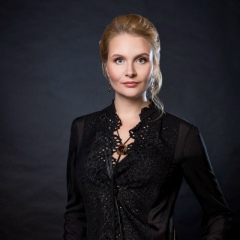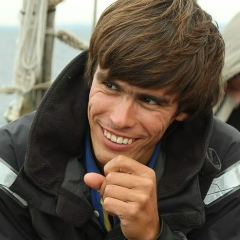Флоренция. Галерея Уффици. Идти или не идти смотреть на эти картины?.. Я в итоге не пожалела, что пошла)
Ссылка из Википедии:
"Несмотря на удалённость от моря и постоянные политические волнения, Флоренция XIII—XVII веков внесла грандиозный вклад в развитие европейской и мировой цивилизации. Город дал миру таких гигантов, как Леонардо да Винчи, Микеланджело, Никколо Макиавелли, Данте и Галилей. Местный диалект лёг в основу литературного итальянского языка, флорентийская монета стала эталоном для всей Европы, флорентийские художники разработали законы перспективы, флорентийский мореплаватель Америго Веспуччи дал своё имя двум континентам, а флорентийские мыслители положили начало эпохе Ренессанса, в связи с чем Флоренция по праву носит имя «Колыбель Возрождения»".
В общем один огромный музей внутри и снаружи.
Таки довелось попасть в галерею Уффици, при этом практически не отстояв в очереди, что было приятным сюрпризом, так как даже в это время туристов во Флоренции очень и очень много☝ .
Почему я не пожалела, что туда попала, хотя также, как и Петя, не являюсь большой поклонницей музеев?
Выставка представлена в хронологическом порядке, начиная с 12-13 века, заканчивая 18-м. Такой формат сильно облегчает восприятие живописи, особенно, если не сильно в ней разбираешься. Следуя по коридору времени, понимаешь, что гений - это прежде всего новатор, дающий дальнейший толчок в развитии искусства, создающий новое направление в живописи.
К примеру взять Леонардо да Винчи. До него линия на картине четко очерчивала предмет, и изображение имело вид раскрашенного рисунка. Наиболее условным был пейзаж, который играл второстепенную роль. Проходя первую часть выставки, это очень отчетливо видно на картинах. Леонардо осознал явление рассеяния света в воздухе и возникновение сфумато — дымки между зрителем и изображённым предметом, которая смягчает цветовые контрасты и линии. В итоге реализм в живописи перешёл на качественно новую ступень "сфумато".
Ну и абстрагируясь от знания того, великая эта картина или нет, просто приятно ходить и анализировать те или иные приемы художника, пытаться понять, что он этим хотел сказать, опираясь на сугубо личное восприятие, свои эмоции и ощущения.
Ссылка из Википедии:
"Несмотря на удалённость от моря и постоянные политические волнения, Флоренция XIII—XVII веков внесла грандиозный вклад в развитие европейской и мировой цивилизации. Город дал миру таких гигантов, как Леонардо да Винчи, Микеланджело, Никколо Макиавелли, Данте и Галилей. Местный диалект лёг в основу литературного итальянского языка, флорентийская монета стала эталоном для всей Европы, флорентийские художники разработали законы перспективы, флорентийский мореплаватель Америго Веспуччи дал своё имя двум континентам, а флорентийские мыслители положили начало эпохе Ренессанса, в связи с чем Флоренция по праву носит имя «Колыбель Возрождения»".
В общем один огромный музей внутри и снаружи.
Таки довелось попасть в галерею Уффици, при этом практически не отстояв в очереди, что было приятным сюрпризом, так как даже в это время туристов во Флоренции очень и очень много☝ .
Почему я не пожалела, что туда попала, хотя также, как и Петя, не являюсь большой поклонницей музеев?
Выставка представлена в хронологическом порядке, начиная с 12-13 века, заканчивая 18-м. Такой формат сильно облегчает восприятие живописи, особенно, если не сильно в ней разбираешься. Следуя по коридору времени, понимаешь, что гений - это прежде всего новатор, дающий дальнейший толчок в развитии искусства, создающий новое направление в живописи.
К примеру взять Леонардо да Винчи. До него линия на картине четко очерчивала предмет, и изображение имело вид раскрашенного рисунка. Наиболее условным был пейзаж, который играл второстепенную роль. Проходя первую часть выставки, это очень отчетливо видно на картинах. Леонардо осознал явление рассеяния света в воздухе и возникновение сфумато — дымки между зрителем и изображённым предметом, которая смягчает цветовые контрасты и линии. В итоге реализм в живописи перешёл на качественно новую ступень "сфумато".
Ну и абстрагируясь от знания того, великая эта картина или нет, просто приятно ходить и анализировать те или иные приемы художника, пытаться понять, что он этим хотел сказать, опираясь на сугубо личное восприятие, свои эмоции и ощущения.
Florence. Uffizi Gallery. Should I go or not to look at these pictures? .. In the end I did not regret that I went)
Link from Wikipedia:
"Despite the remoteness from the sea and constant political unrest, Florence of the 13th-17th centuries made a tremendous contribution to the development of European and world civilization. The city gave the world such giants as Leonardo da Vinci, Michelangelo, Niccolo Machiavelli, Dante and Galilei. The local dialect lay in the basis of the literary Italian language, the Florentine coin became the standard for all of Europe, the Florentine artists developed the laws of perspective, the Florentine navigator Amerigo Vespucci gave his name to two continents, and the Florentine thinkers laid the foundation for the Renaissance era, in connection with which Florence rightfully bears the name "Cradle of the Renaissance" ".
All in all, one huge museum inside and out.
Taki had a chance to get into the Uffizi Gallery, while practically not standing in line, which was a pleasant surprise, since even at this time there are a lot of tourists in Florence☝.
Why did I not regret that I got there, although, like Petya, I am not a big fan of museums?
The exhibition is presented in chronological order, starting from the 12-13th century and ending with the 18th. This format greatly facilitates the perception of painting, especially if you don't know much about it. Following the corridor of time, you understand that genius is, first of all, an innovator, giving further impetus to the development of art, creating a new direction in painting.
Take Leonardo da Vinci, for example. Before him, the line in the picture clearly outlined the subject, and the image looked like a painted drawing. The most conditional was the landscape, which played a secondary role. Passing through the first part of the exhibition, this is very clearly seen in the paintings. Leonardo realized the phenomenon of light scattering in the air and the appearance of sfumato - a haze between the viewer and the depicted object, which softens color contrasts and lines. As a result, realism in painting moved to a qualitatively new stage of "sfumato".
Well, abstracting from the knowledge of whether this picture is great or not, it's just nice to walk around and analyze certain techniques of the artist, try to understand what he wanted to say by this, relying on purely personal perception, his emotions and feelings.
Link from Wikipedia:
"Despite the remoteness from the sea and constant political unrest, Florence of the 13th-17th centuries made a tremendous contribution to the development of European and world civilization. The city gave the world such giants as Leonardo da Vinci, Michelangelo, Niccolo Machiavelli, Dante and Galilei. The local dialect lay in the basis of the literary Italian language, the Florentine coin became the standard for all of Europe, the Florentine artists developed the laws of perspective, the Florentine navigator Amerigo Vespucci gave his name to two continents, and the Florentine thinkers laid the foundation for the Renaissance era, in connection with which Florence rightfully bears the name "Cradle of the Renaissance" ".
All in all, one huge museum inside and out.
Taki had a chance to get into the Uffizi Gallery, while practically not standing in line, which was a pleasant surprise, since even at this time there are a lot of tourists in Florence☝.
Why did I not regret that I got there, although, like Petya, I am not a big fan of museums?
The exhibition is presented in chronological order, starting from the 12-13th century and ending with the 18th. This format greatly facilitates the perception of painting, especially if you don't know much about it. Following the corridor of time, you understand that genius is, first of all, an innovator, giving further impetus to the development of art, creating a new direction in painting.
Take Leonardo da Vinci, for example. Before him, the line in the picture clearly outlined the subject, and the image looked like a painted drawing. The most conditional was the landscape, which played a secondary role. Passing through the first part of the exhibition, this is very clearly seen in the paintings. Leonardo realized the phenomenon of light scattering in the air and the appearance of sfumato - a haze between the viewer and the depicted object, which softens color contrasts and lines. As a result, realism in painting moved to a qualitatively new stage of "sfumato".
Well, abstracting from the knowledge of whether this picture is great or not, it's just nice to walk around and analyze certain techniques of the artist, try to understand what he wanted to say by this, relying on purely personal perception, his emotions and feelings.






У записи 3 лайков,
0 репостов.
0 репостов.
Эту запись оставил(а) на своей стене Мария Гладилина
























